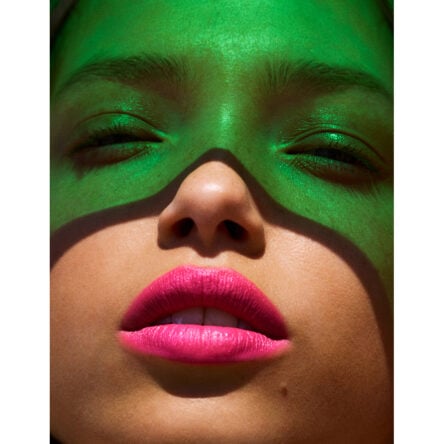
Women’s hormones are no longer off the table as a topic of discussion. More and more individuals, companies and brands are being open and responsive to the impact of hormonal shifts on women, from the menstrual cycle through to menopause and beyond. But how do hormones impact on your skincare needs? Cyclical living is a skincare trend in the spotlight at the moment, with a particular focus on people who have a monthly period, and how this impacts their skincare needs. But what exactly is it? And can it help you solve your skincare issues?

What Is Cyclical Living Skincare?
Cyclical living is the practice of aligning elements of your lifestyle with natural cycles, such as the seasons, the lunar cycle, and your menstrual cycle. The approach recognises that our bodies and energy levels are not consistent, so understanding and working with these fluctuations can lead to better mental and physical health and happiness. With this in mind, cyclical living skincare involves adapting your skincare routine to the different stages of your menstrual cycle to address the changing needs of your skin.
Understanding Your Menstrual Cycle & Your Skin Needs
Let’s break down the menstrual cycle, and how each may impact your skincare needs. Before we go through these it’s important to note that this process is all about tailoring your regime to your individual needs, so the best way to get to grips with this is via cycle tracking and making a note of how your skin is in the phases of your cycle. The menstrual cycle consists of four phases: menstruation, follicular phase, ovulation and luteal. Here’s what they are, and what your skin might need.

Phase one: Menstruation
This is when you experience your period, and it typically lasts for 3-7 days. During this phase, your hormone levels are low, so your skin may be more sensitive and prone to breakouts. You could think about focusing on gentle cleansing and hydrating products to soothe your skin in this phase.
Phase two: Follicular phase
This phase begins after your period ends and lasts until ovulation. It is when there is growth of a new egg in the ovary. In this phase, your oestrogen levels start to rise, which may lead to a brighter complexion and increased collagen production. You may want to use this time to focus on exfoliating and incorporating products to promote radiance and hydration.

Phase three: Ovulation
This is when the egg is released from the ovary and is available for fertilisation. It usually occurs around half way through a 28-day cycle, on day 14. This is when your skin is likely to be at its best, thanks to the high levels of oestrogen. You may want to focus on maintaining your skincare routine and focus on sun protection and hydration to encourage radiance. Remember that this won’t be the case for everyone, some people experience breakouts around the time of ovulation!
Phase four: Luteal phase
This phase begins after ovulation and lasts until the start of your next period. The hormonal shift is marked by the production of progesterone, which can lead to oilier skin and potential breakouts. Being prepared for this and avoiding skincare containing oils in this period may work well for you.
Does Cyclical Living Skincare Work?
Paying closer attention to your body and your individual skin needs is always beneficial. Even if you’ve gone through the menopause, or hormonal contraception impacts your cycle, it’s still worth being in tune with how lifestyle and environmental factors are impacting you. As well as the menstrual cycle, other cycles to be aware of when it comes to your skin include the seasons, because the weather and environmental factors including sun, pollution, central heating and air con can all impact your skin. If you notice certain foods also trigger skin problems you can cut these out too.
When it comes to your menstrual cycle, by addressing your skin’s specific needs at each stage of your cycle, you can promote a healthier complexion and reduce the likelihood of breakouts and other skin issues that could be avoided with a tailored regime.
READ NEXT: How To Not Let Stress Affect Your Skin | Menopause Skincare Guide
© Wendy Rowe. All Rights Reserved.












